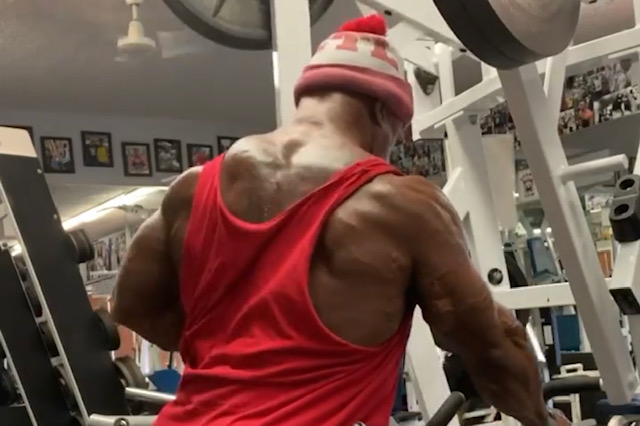
Though I have worked online for almost 20 years, I have been doing one-on-one training for a little over six months now. I am surprised at how many things I have always considered quite basic or rudimentary that aren't understood by a lot of people who train. That isn't a shot at them as much as it reminds me that sometimes we think certain things are basic (to us) and these things aren't basic to everyone.
I had a client the other day who stated his grip hurt and it caused him to stop the set short. I asked him to show me where he places the bar in his hand and was surprised when he showed me what I call a "whole-hand" grip. My initial thought was, "hell yes that will hurt," and then realized that he just didn't know there was a less painful option.
Now, before you think ROY CALLENDAR and his sponge grips, I'm not talking about gimics. At the same time, I admit to using sponges in my younger days and they worked incredibly well — but for PUSHING, not pulling. That would be for another coach log, though.
I'm talking about simply changing the placement of the bar in your hand.
I would call my method a "hook grip" but that term has already been used to label a different grip, and it's too bad because the best way to describe it is that the fingers act as a hook. That being said, I have looked far and wide and though I have found a couple people on the internet talk about this grip, I have yet to see it referred to with a any kind of label. So, for now, I am calling it — and this might seem obvious — a "Skip Grip." Don't knock it. Branding is everything.
The downfalls for using a regular or "whole-hand" grip are many. However, the main reasons this grip sucks are:
1. It is painful when you start to pull a lot of weight
2. It can quite literally rip your skin. It can cause calluses, too, but I don't like to mention this one because if you train and don't have calluses, well, you don't train hard enough or heavy enough.
3. It can cause your grip strength to fade much quicker during a set or after multiple sets. As your grip strength begins to fail, the bar will slide further toward the fingers causing the skin to pinch at the first knuckle (at the base of the finger). This joint or knuckle is technically called the metacarpophalangeal joint. It is the joint where you will find the largest calluses on the hand of someone who trains hard.
The benefits to using the "Skip Grip":
1. The exact opposite of all 3 points listed above.
It really is that simple.
The best way to explain the "Skip Grip" is that instead of the bar lying in the meat of the hand (dead center of the palm of the hand), the bar sits between the first two knuckles of the fingers, as the fingers form a hook instead of a full, whole-hand grip. For those of you who know the bone structure of the hand, the bar would lie across the first proximal phalanges if the palm was open and flat on a table with the palm facing up.
Though this is where the bar will sit, the angle of pull while doing any type of row movement will cause the bar to sit more in the crack or groove of the second knuckle of the finger or, in technical jargon, the proximal interphalangeal joint. In layman's terms, this is the middle knuckle of the finger. This grip causes the weight, while being pulled, to be relatively equally distributed between both the first and second phalanges.
These pictures show what a whole-hand grip looks like:
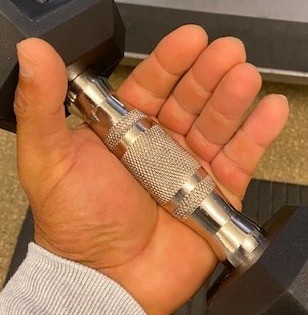
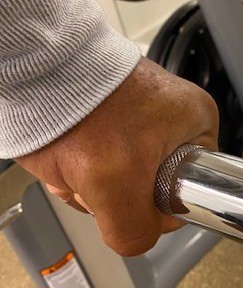
These pictures show what a Skip Grip looks like:
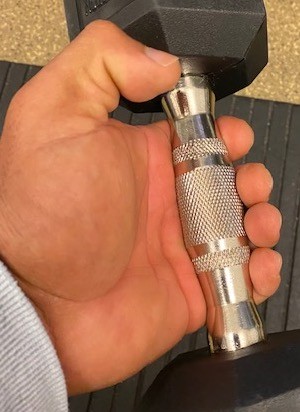
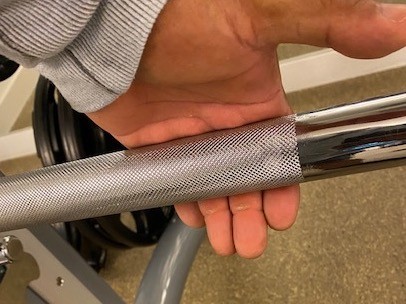
As I stated earlier in this log, you may already use this type of grip without even giving it much thought. I have used this grip for so long that I can't even think of when I first started using it. The point is, I assumed everyone used the Skip Grip until I came across client after client who did not -- from clients who have only recently started training, to clients who have been training for years.
I should note that even when using wrist straps, you can still use the Skip Grip. I have found even though your grip strength won't matter as much while using straps, it is still more comfortable.
If you have not used it or do not use it, consider trying it for a couple of weeks to see if you like it and if you can get used to it. Not only will you find that it is more comfortable, but you likely will be able to pull more weight and your forearms (grip strength) won't fatigue as quickly.
Click the banner below to shop for the best wrist straps in the industry:









